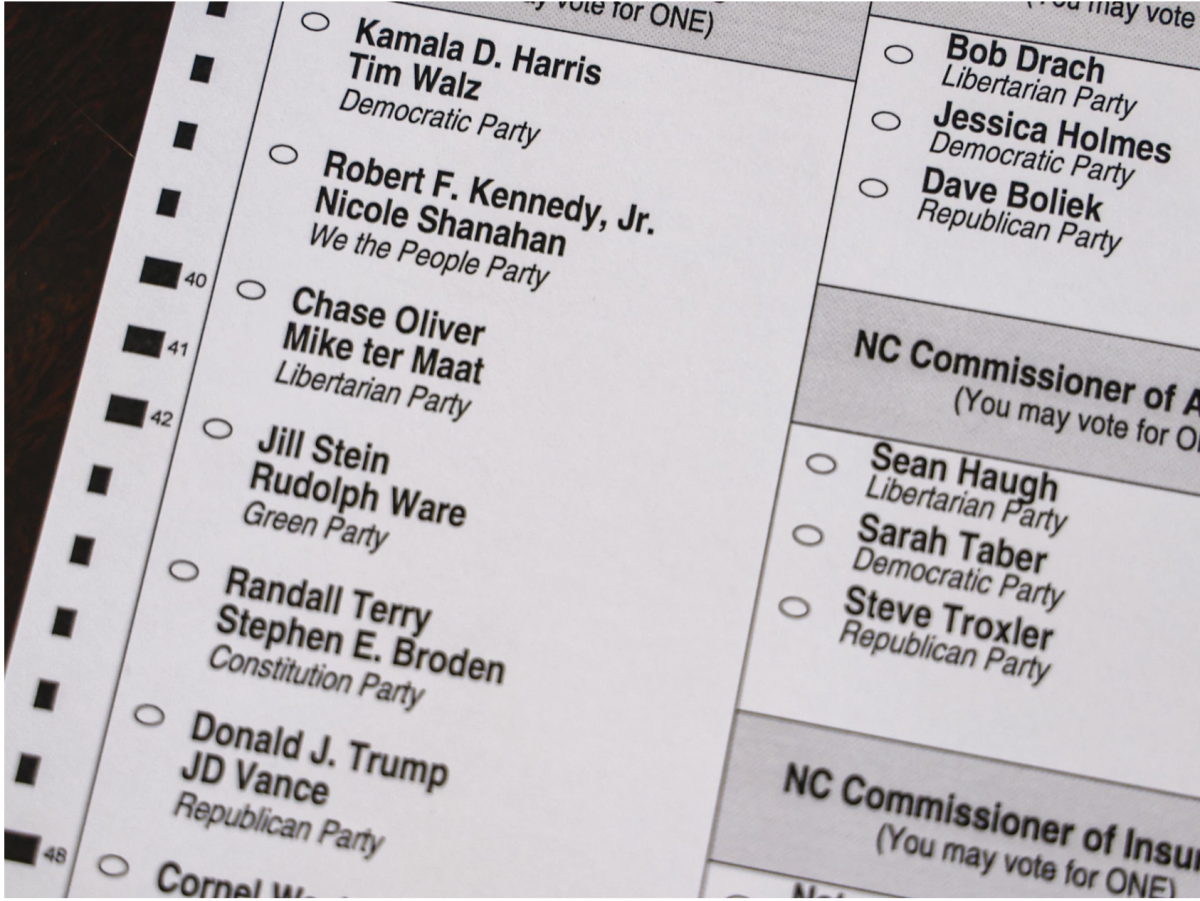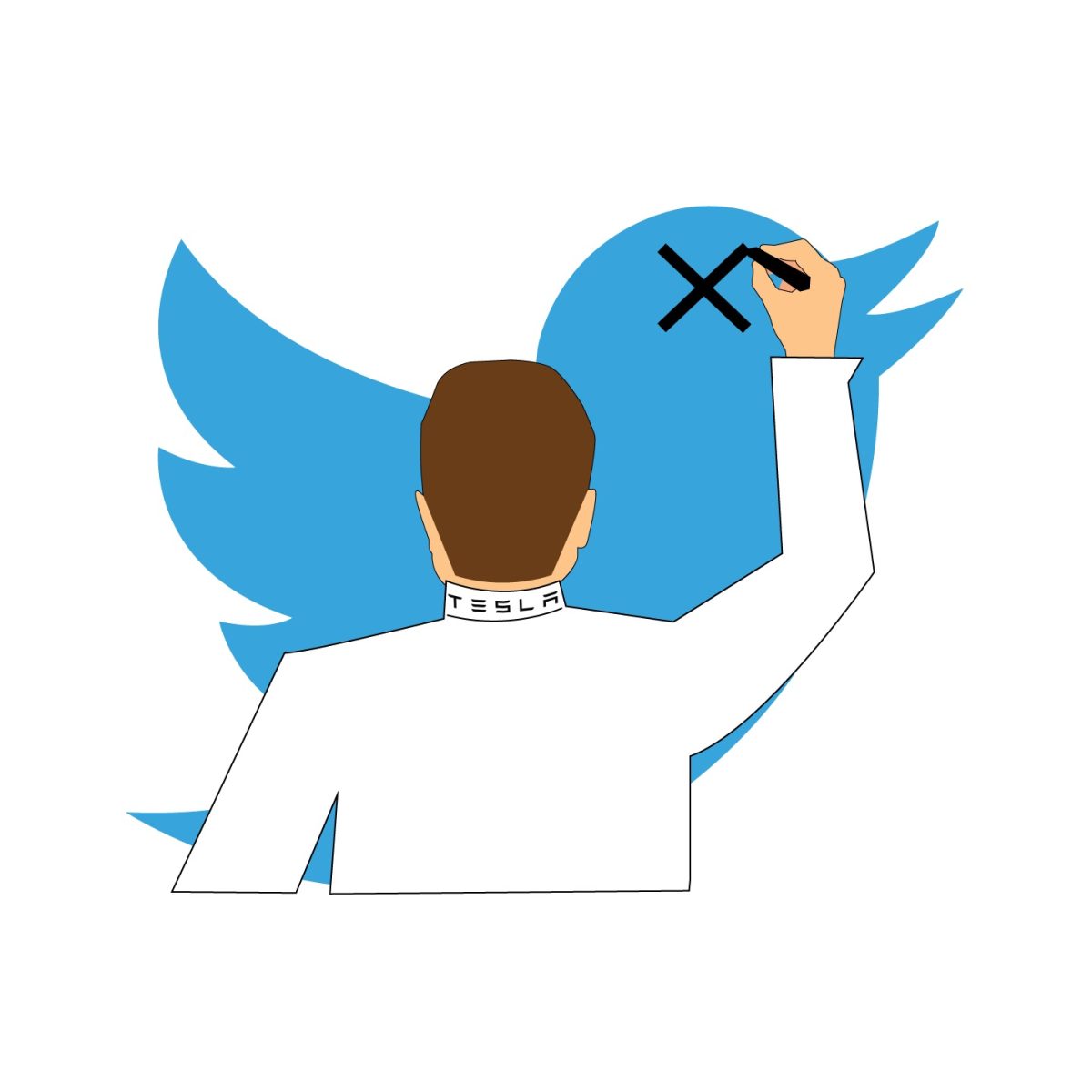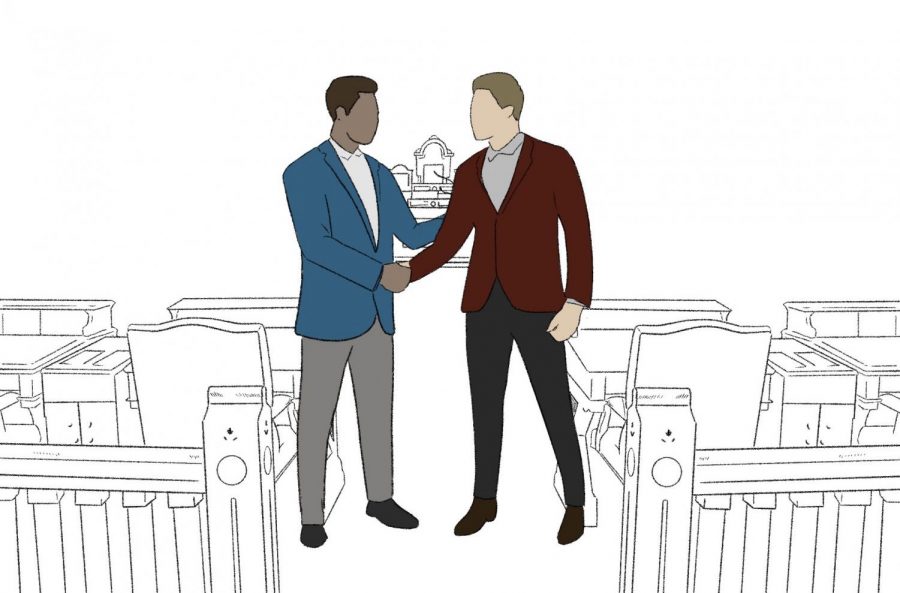With the long established two-party system in the United States, there is a popular belief that third-party candidates have no chance of winning. So, voting for one is comparable to throwing your vote in the trash.
Third parties can hold significant power in our democracy but voters must overcome the complacency with the current state of the system to see the potential long-term benefits. Young voters, in particular, need to look past the results of this election and see the potential that a third-party vote can hold as it is their future on the line.
The Democratic Party lost a significant amount of typically dependable voters in this election due to dissatisfaction with the party’s lack of acknowledgment of major issues. This led Trump to see a significant increase in votes from young Black and Latino men, demographics that strongly supported Biden in the 2020 election.
Voting for the lesser evil of the two major candidates in the hopes of a slightly better candidate is a narrow mindset based on instant gratification. Kamala Harris lost a chunk of the Democrat’s typical votes. Yet rather than vote for a third-party candidate with a similar platform, voters opted to vote for Donald Trump. This is a trend that has been increasingly popular for many years but ultimately leaves many still unhappy with the elected president.
In this 2024 presidential election the likelihood of Jill Stein winning as the Green Party candidate was next to none. However, change has to begin somewhere, and if students begin to vote for candidates they feel better aligned with their beliefs, a movement can begin.
25% of Americans and 30% of Americans under age 50 feel that neither of the major parties represent their interests. Making a population that has the potential to uproot the current state of this two party system many are tired of.
With billions of dollars spent on campaigns largely lobbied by major corporations and the elite, Republicans and Democrats have become out of touch with the American people. Third-party candidates don’t receive the same level of lobbying from big companies pushing their agendas. Instead, they look to better serve the needs of the average person, not the rich.
Over the years, third parties have had some success. In 1992, Ross Perot ran a significant presidential campaign on the independent ticket. At a certain point, Perot even led the polls while running against George H.W Bush and Bill Clinton. A major factor Perot had in his favor was the dissatisfaction with the incumbent President H.W. Bush.
Perot received 19% of the popular vote which not only played a major role in Bush not being re-elected but also revealed the American people’s desire for a candidate that could shake up the two-party system.
Problems with having two major parties arise when neither address issues important to the American people. A major piece of Perot’s campaign tackled the government’s budget deficit, an issue both Bush and Clinton previously ignored but were forced to address when Perot’s platform gained serious traction. This is a perfect example of how third parties can push issues plaguing the American people that the main parties are not addressing.
While most third party candidates don’t come nearly as far as Perot did in terms of the popular vote, third parties are often successful at creating a platform for issues that many Americans are passionate about. Jill Stein garnered a dedicated following from many in support of Palestine. With both Harris and Trump voicing their support for Israel, Stein offered a choice for voters who opposed the ongoing genocide.
This occurrence alone is evidence of the impact voting for third parties can have in the current election. If young voters have issues that they’re passionate about and feel are not represented by the major parties, they are more likely to find them in third party campaigns.
Stephen Goggin, an associate professor of political science at San Diego State University, voiced his thoughts on the current climate surrounding the young vote and political parties.
“Pressure from other coalitions can matter here, they can create incentives for the main two parties to actually be more responsive to people, including young people,” Goggin said.
The issue is, though, currently parties don’t cater their campaigns toward the younger generations’ needs because there is simply not nearly enough support.
“Younger voters are often more dissatisfied but also less likely to show up,” Goggin said.
In the 2020 presidential election, only 51.4% of eligible voters aged 18-24 voted, according to the US Census Bureau. In comparison 76% of eligible voters aged 65-74 voted. So, it’s not surprising that campaigns focused on the desires of the older demographics as they received a greater amount of voter turnout from those ages.
So, while there is currently a lot of potential for the young people’s vote to cause a serious stir, historically, there is not a large enough incentive for candidates to structure their campaigns around getting their vote because a much smaller percentage of them actually vote.
If students want to establish a long-term change in the political system, they need to start with increasing voter turnout. This will draw the attention of all parties and by voting for third parties, students have the opportunity to vote for a candidate they have more confidence in and force the main parties to adjust their campaigns to acknowledge their needs.
Continued discontent means nothing without action. As the future of this nation, the younger generations need to have a more active voice in order for necessary change to be made.








